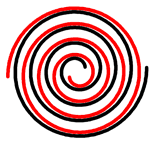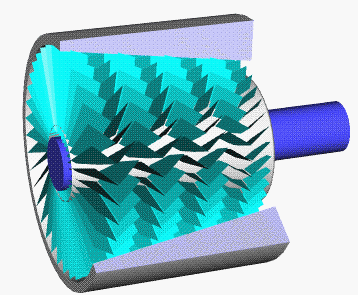Fun!
Anyway i have very low expectations for this blog being something that i do regularly but we shall see what happens.
A little bit about today.
I am up here in my office mooching about. I have a paper from my work at Cambridge which i should be pouring a lot more effort into but i just dont feel the motivation.
Instead I have been spending a fair bit of time in the lab recently, getting proficient with my new LT-UHV-STM/AFM.
But not right now. For most of this week it will be horridly hot down in the lab because i am baking the machine. This is a procedure you have to do every once in a while after you have done repairs to get everything clean again. You see, the machine is an Ultra High Vacuum System. This measn that is operates at very low pressures, like upi would get in space. To achive this you have to get the machine very clean. Oddly, to do this you heat the machine up while you are pumping on it and all of the gunk evaporates off the walls of the chamber and gets pumped out. So, when it cools down this same gunk doesn't mess up all the pressure inside.
So in this way when the system cools down I hope the pressure will be somewhere in the 10^(-11) millibar range which means that is is 0.0000000000001% of an atmosphere.
But how do i get the pressure down to that very low value? Well there are thhree types of pump that tha re used to get to sequentially lower pressures. The first type of pump known as a scroll pump is a simple kind of pump that operates in the most intuative fashion. The pressure of the atmospherer is such that it behaves like one cwoudl expect from real life. It consists of two spiral membrains that move relative to one another such that they enclose a space that initially is at the inlet of the pump and ends up at the outles. It is sort of like a spiral piston.

This type of pump can get to pressures of about 10^(-4) mbar
The next type of pump is called a turbomolecular pump. It operates very similarly to a jet engine. it has a serie of fan blade which are alternately spinning (rotor) and fixed(stator) the rotating blades impart momentum to the gas molecules. Due to the angle of the rotor blade the momentum that is imparted forces the gas down the pump towards the exhaust. The turbopump blades rotate at about 1000 rpm.
 For this type of pump we start thinking about the gas as a suspension of discrete particles that have momentm and travel through space with only occasional colissions with other gas particles. This begins to occurs at the type of pressure that can be achive with scroll pumps. So with the scroll pump attached to the turbopump the turbopump can start to work. This gets down to pressures of 10(-7) mbar. maybe even better if everything is nice and clean.
For this type of pump we start thinking about the gas as a suspension of discrete particles that have momentm and travel through space with only occasional colissions with other gas particles. This begins to occurs at the type of pressure that can be achive with scroll pumps. So with the scroll pump attached to the turbopump the turbopump can start to work. This gets down to pressures of 10(-7) mbar. maybe even better if everything is nice and clean.The final type of pump is called the ion pump. It has no moving parts. Just a stream of electrons and a magnetic field. The occasional gas molecule flying through space is smashed with a beam of electrons. This cases the molecule to become ionized. That is, one of it's electrons is missing and so it has a net charge. Now that it has a sharge it is susceptibvle to the magnetic field and is pushed down into the bottom of the pump which is made of titanium. The charged molecule smashes into the titanium and reactes with it sticking to it. The impact also splashes some of the titanium away burying adjacent stuck gas molecules. The Ion pump can only start working at pressures of 10^(-6) mbar becase if there is too much gas the titanium very quickly becomes saturated with molecules. The pressures that the ion pump can achive are 10^(-11) and beyond. However it is difficult to reliably measure pressures below 10^(-11).
Eh but that is enough about pumps. Maybe som other things in my next post.
No comments:
Post a Comment